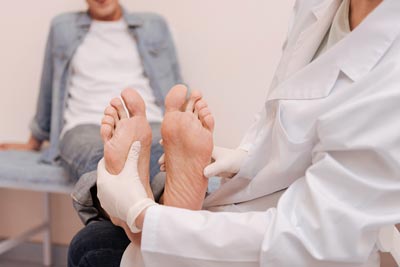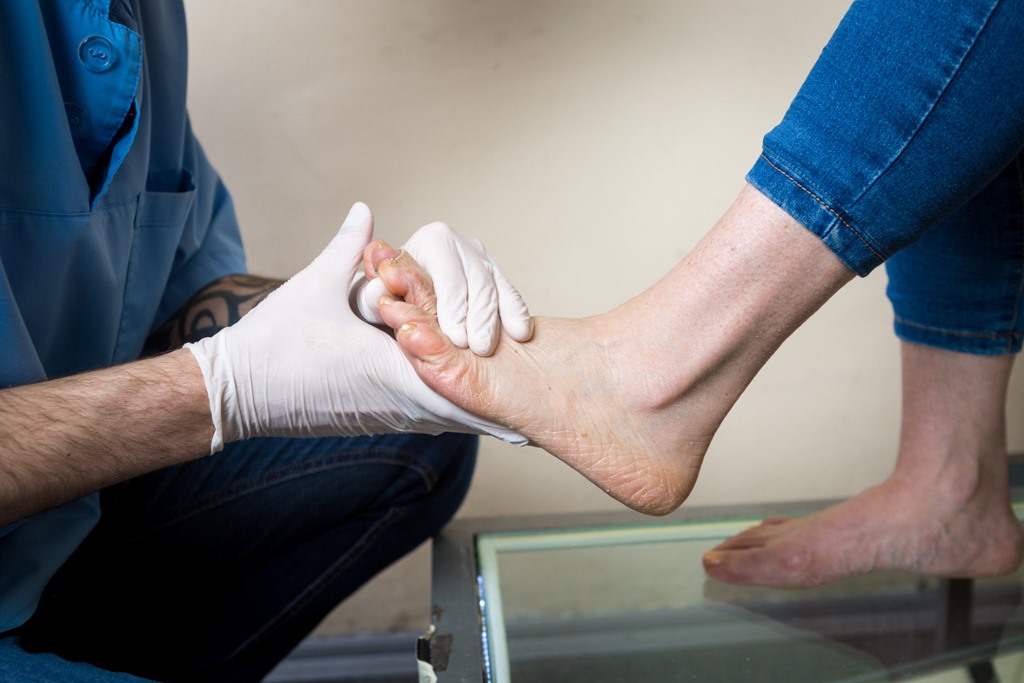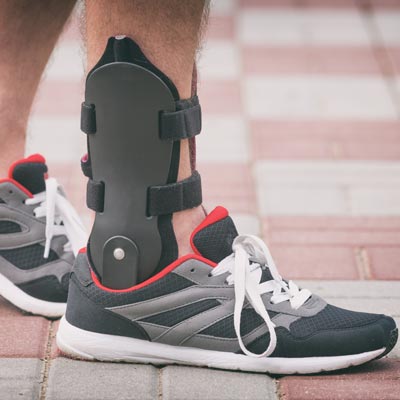Debunking Common Misconceptions About Bunions
Bunions, those bony bumps that form at the base of the big toe, are often misunderstood ailments wrapped in myths and misconceptions. Behind the simple appearance of a bunion lies a complex web of beliefs that range from their causes to the effectiveness of treatment options. Many people assume that bunions are merely a result of wearing the wrong shoes, but the truth is far more intricate. In this blog post, we’re going to untangle the facts from fiction and shed light on what bunions are, what causes them, and the most effective ways to manage and treat them. Join us as we debunk common misconceptions about bunions, providing you with the knowledge to better understand and care for your feet.
Bunions Are Caused Solely by Wearing High Heels
One of the most prevalent misconceptions about bunions is that they are caused exclusively by wearing high heels. While tight-fitting or high-heeled shoes can exacerbate discomfort and contribute to the worsening of a bunion, they are not the sole cause. The truth is, that bunions are primarily caused by genetic factors that influence the structure and biomechanics of the foot. These inherited traits can lead to the development of a bunion by affecting how weight is distributed across the foot, thus altering the pressure points and causing the joint at the base of the big toe to protrude. Environmental factors, including footwear, do play a role in bunion formation but mostly in how quickly they develop or in the severity of the symptoms.

Bunions
Only Elderly People Get Bunions
Another widespread belief is that bunions are a problem only for the elderly. This misconception stems from the visual prevalence of bunions among older populations, leading many to assume that age is a primary factor in their development. However, the reality is that bunions can occur at any age, including in teenagers and young adults. The development of bunions is more closely related to the foot’s structure and genetic predispositions rather than age itself. While it’s true that the symptoms and visibility of bunions might increase with age due to years of wearing ill-fitting shoes, standing for long periods, or other contributing factors, age alone is not a determinant for the onset of this condition.
Bunions: More Than Just a Cosmetic Concern
There’s a prevailing myth that bunions are solely a superficial issue, a simple imperfection that affects only the appearance of the foot. However, this viewpoint drastically undermines the real problems bunions can introduce, including pain, inflammation, and even mobility challenges. Far from being just a matter of aesthetics, bunions can lead to significant health concerns.
The misalignment caused by bunions doesn’t only change how the foot looks; it can result in continuous discomfort and even alter the way you walk. This alteration in gait can ripple out, causing posture issues and discomfort not just in the feet, but also in the back, hips, and knees. Ignoring bunions as a cosmetic inconsequence means neglecting the crucial impacts they can have on a person’s overall well-being and lifestyle. Understanding the true nature of bunions is the first step towards effective treatment and managing their broader implications on health.
Surgery Is the Only Solution for Bunions
A common assumption is that surgery is the only definitive solution to correct bunions. While it’s true that surgical procedures can realign the foot and provide a permanent fix, it’s not the sole or immediate option for everyone. Many cases of bunions can be managed effectively through non-surgical treatment of bunions, such as wearing properly fitted shoes, utilizing orthotic devices to distribute pressure more evenly across the foot, or engaging in physical therapy exercises aimed at strengthening foot muscles and improving joint mobility. These methods can significantly alleviate pain and halt the progression of the bunion. Surgery is typically considered when the bunion causes severe pain that limits daily activities, or when non-invasive treatments fail to provide relief. It’s important to consult with a healthcare professional to explore all options and decide on the best course of action based on the severity of the bunion and individual health considerations.

Non-surgical Bunion Treatment
Bunion Surgery Has a Long and Painful Recovery
A common concern among individuals considering bunion surgery is the belief in a lengthy and agonizing recovery period. While recovery experiences can vary widely depending on the type of surgery performed, the patient’s overall health, and adherence to post-operative care, the notion of an excessively painful recovery is often exaggerated. Modern surgical techniques and pain management strategies have significantly improved over the years, focusing on minimizing discomfort and accelerating the healing process. Patients can expect to engage in gentle movements and weight-bearing activities much sooner than in the past, contributing to a quicker return to normal activities. Nonetheless, it is crucial for patients to have realistic expectations and to follow their surgeon’s guidance closely to ensure the best possible outcome from the surgery. Proper post-operative care, including rest, elevation of the foot, and physical therapy, plays a vital role in the recovery process, helping to manage pain and enhance mobility.
Busting the Myth: Can Home Remedies Cure Bunions?
In the sea of health myths that swirl around us, one particularly persistent belief is that bunions—a common foot ailment—can be whisked away with nothing more than a few simple home treatments.
While it’s tempting to think that the discomfort and irritation brought on by bunions can be easily vanquished with DIY solutions, the fact remains that these remedies are more of a band-aid than a cure. True, methods like icing affected areas, adopting bunion pads, or performing toe-stretching exercises can indeed offer a reprieve from pain and soreness. Altering one’s choice of footwear to ensure a snug yet comfortable fit also goes a long way in alleviating direct pressure on the afflicted area.
But here’s the kicker: while these steps are beneficial in managing the symptoms and might even put a pause on the bunion’s progression, they fall short of correcting the underlying structural misalignment of the foot. In other words, these home remedies are valuable tools in your comfort toolkit but aren’t a magic fix.
This isn’t to say that one should resign to fate and live in discomfort. These practical measures serve an important role in enhancing day-to-day comfort and can significantly improve one’s quality of life when dealing with bunions. They are, however, part of a broader conversation—one that involves professional medical counsel.
Seeking advice from a healthcare professional is a critical step for anyone battling bunions. It’s essential for gauging the severity of your specific situation and charting out a treatment plan that addresses the root cause, offering a more systemic solution to the problem at hand.
Common Myths About Bunion Treatment Debunked
There’s a widely held belief that all treatments for bunions are essentially the same, which couldn’t be further from the truth. Each case of bunion should be regarded as unique, with treatment plans tailored to fit the specific needs of the patient, including the severity of the bunion, associated symptoms, and lifestyle considerations. While non-surgical methods may include lifestyle modifications such as adopting different footwear, using custom orthotics, implementing targeted exercises, and taking medication to alleviate pain and inflammation, surgical interventions vary widely. These surgical options differ in terms of the complexity of the procedure, the length of the recovery period, and the expected outcomes. Choosing the right path forward involves a detailed conversation between the patient and their healthcare provider, aimed at identifying the most beneficial approach based on the patient’s precise needs and hopes for improvement. Recognizing that there is no universal solution to bunion treatment is key to effectively managing and finding relief from this prevalent foot issue.

Bunion Treatment
Understanding Bunion Recurrence Post-Treatment
It’s a common misconception that once bunions are treated, they won’t trouble you again. However, despite the reassurance this thought may provide, it’s not entirely true. Bunions can indeed make a comeback after treatment, which might include surgical procedures. To reduce the chance of a bunion returning, it’s vital to tackle the root problems, such as issues with foot mechanics or the type of shoes you wear.
After undergoing treatment for bunions, continuing to wear shoes that fit well and utilizing orthotic devices as suggested by a foot healthcare provider is crucial. For those who have had surgery, following the given post-surgery care instructions and engaging in recommended physical therapy is key for keeping the foot properly aligned and bolstering the strength of foot muscles. That said, factors like genetics or certain activities that strain the feet could lead to the recurrence of bunions with time.
Thus, although bunion treatment can significantly lessen discomfort and enhance the structure of the foot, continuous care, and attention post-treatment are indispensable for achieving enduring outcomes.
In conclusion, while the road to treating and managing bunions may seem daunting, understanding the facts versus the myths is crucial. From debunking misconceptions about the inevitability of surgery to recognizing the vital role of personalized care and post-treatment practices, it is clear that a comprehensive approach is necessary. It’s essential for individuals suffering from bunions to consult healthcare professionals, seek customized treatment plans, and adhere closely to post-treatment guidelines. By doing so, one can effectively manage bunion symptoms, prevent their progression, and reduce the likelihood of recurrence. Ultimately, striving for healthy foot practices and making informed decisions are key steps toward maintaining foot health and enhancing overall quality of life.
Flagstaff Foot Doctors: Anthony Rosales DPM
https://www.google.com/maps?cid=8835841318590452161
421 N Humphreys St, Flagstaff, AZ 86001, United States
(928) 774-4825
https://flagstafffootandankle.com/
